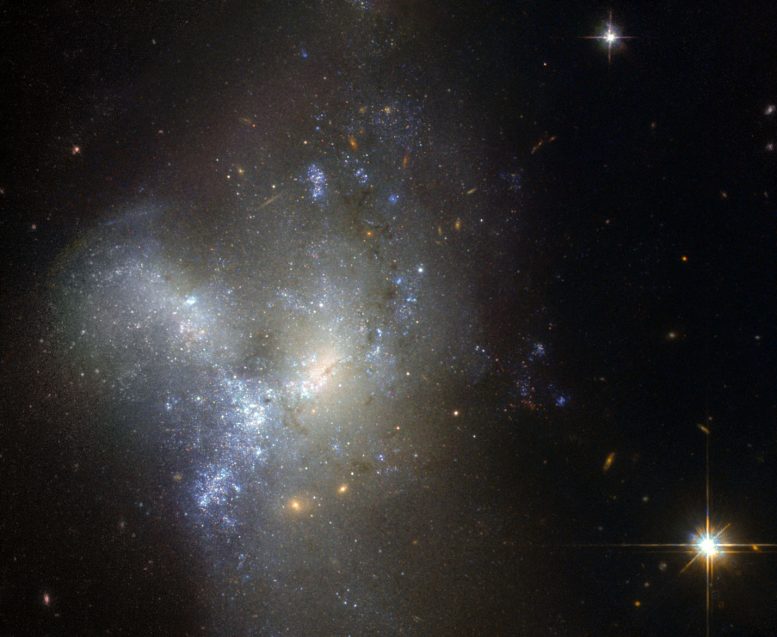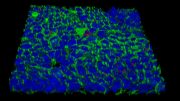
NGC 1487 is about 30 million light-years away in the southern constellation of Eridanus. Credit: ESA/Hubble & NASA; Acknowledgement: Judy Schmidt
This newly released Hubble image shows peculiar galaxy NGC 1487, which is about 30 million light-years away in the southern constellation of Eridanus.
Rather than viewing a celestial object, it is actually better to think of this as an event. Here, we are witnessing two or more galaxies in the act of merging together to form a single new galaxy. Each progenitor has lost almost all traces of its original appearance, as stars and gas have been thrown hither and thither by gravity in an elaborate cosmic whirl.
Unless one is much bigger than the other, galaxies are always disrupted by the violence of the merging process. As a result, it is very difficult to determine precisely what the original galaxies looked like and, indeed, how many of them there were. In this case, it is possible that we are seeing the merger of several dwarf galaxies that were previously clumped together in a small group.
Although older yellow and red stars can be seen in the outer regions of the new galaxy, their appearance is dominated by large areas of bright blue stars, illuminating the patches of gas that gave them life. This burst of star formation may well have been triggered by the merger.









Be the first to comment on "Hubble Image of the Week – Peculiar Galaxy NGC 1487"